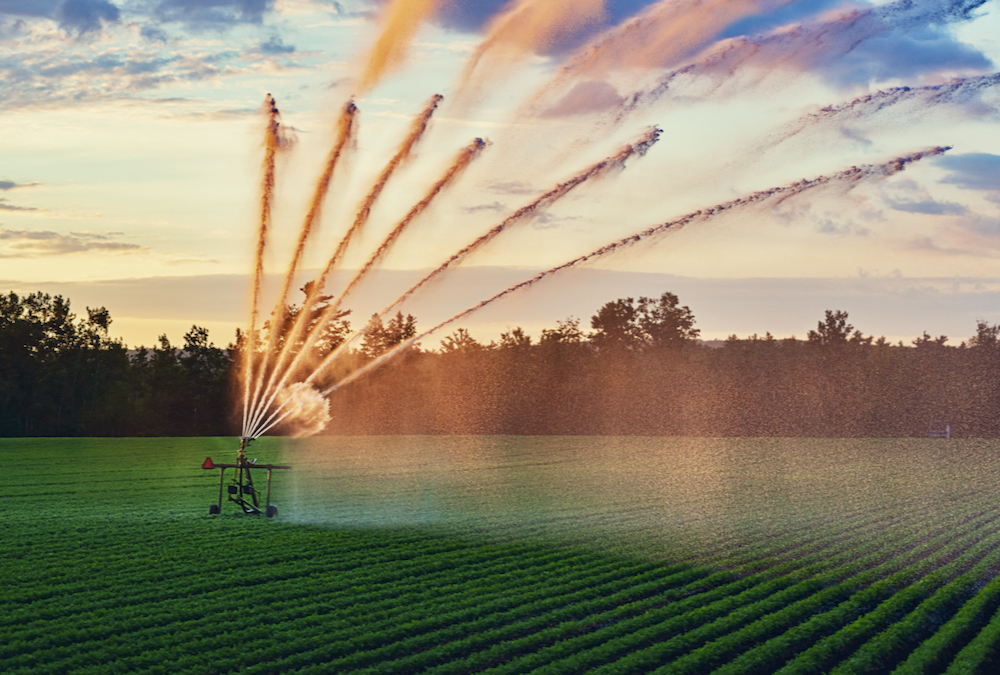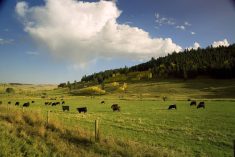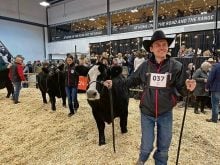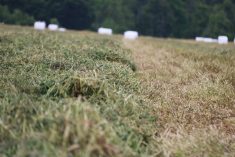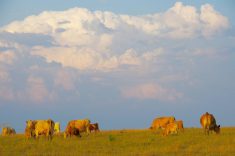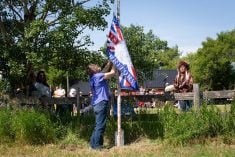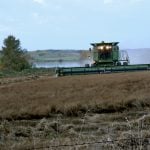Getting livestock back on the landscape — that is the goal for the Manitoba Grazing Exchange and a Living Labs initiative in Nova Scotia. And it benefits more than the livestock.
The Manitoba Grazing Exchange started in 2021 as a partnership between the Manitoba Forage and Grassland Association and Manitoba Organic Alliance. “It is a funded project by the Conservation Trust Fund of Manitoba,” says Duncan Morrison, executive director of the Manitoba Forage and Grassland Association.
Recent droughts in Manitoba had feed supplies running low for producers. After looking at an example of an online land swap platform in South Dakota that matches grain farmers with cover crops or perennials to graze with livestock producers, the Manitoba Grazing Exchange began.
Read Also
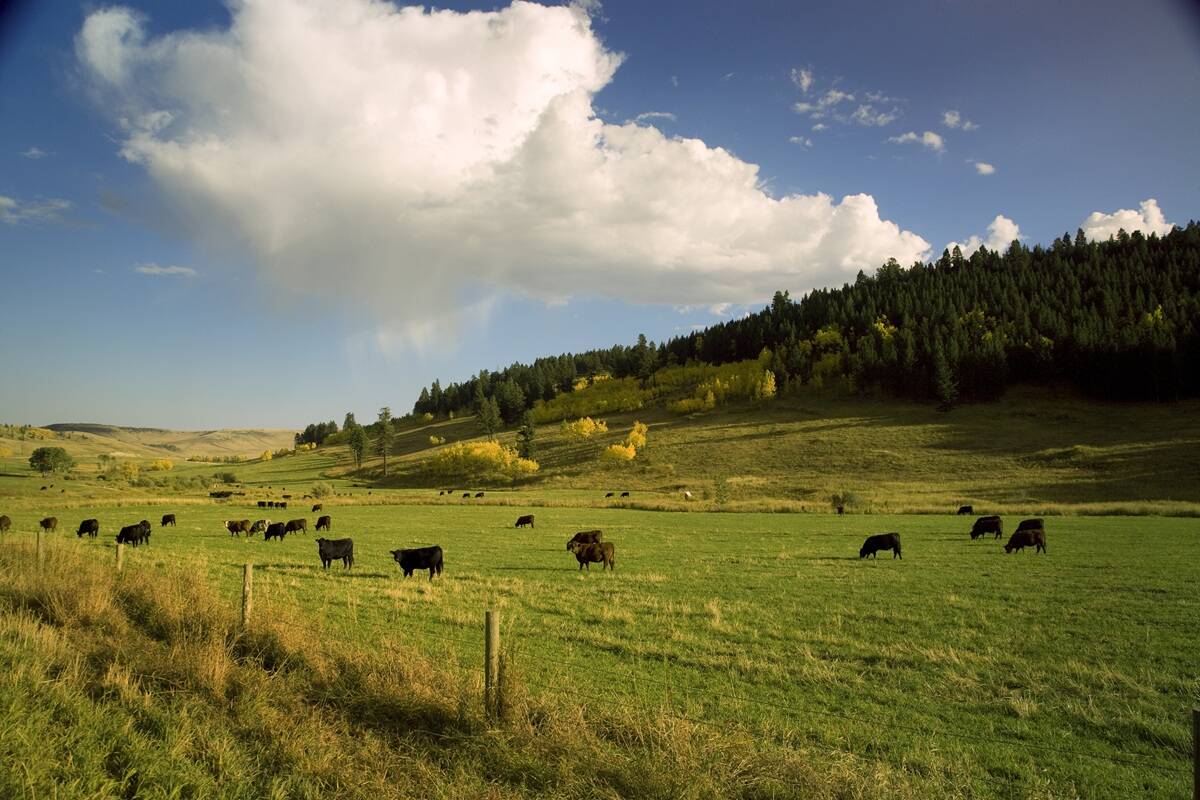
Are you a competitive supplier of weaned beef calves?
Beef farmers and ranchers need to strategically manage costs to achieve and maintain profitability.
“The ability for livestock producers to access extra food and fields for their cattle is something we are trying to bring the groups together,” says Morrison.
Producers are encouraged to go on to the online portal and sign up. Once signed up, producers can enter the name of their farm and pick if they have livestock or a land base. The season available can also be selected, as well as the location on a map. The producer also can write a small description of what is offered. For example, a livestock producer would put a description of the number and type of livestock available, if they are willing to travel, seasons they can graze and if they are willing to install fences, water systems or haul water.
Getting on to the virtual platform and learning it is one thing that needs to happen to make the land swap work.
“In situations where neighbours of crop and beef producers are working together, there is that synergy that they both understand the benefits to the soil and the benefit to their herd. That’s what we aspire to bring to the virtual platform,” Morrison says.
They are also looking for people who may not consider grazing their animals on other people’s land. By using examples where it has worked, they hope it will get more people to buy into the land-swap idea.
There have been some challenges involved with getting not only the virtual platform going, but with getting people to sign up.
“Having a pre-existing sense of individualism and not having experience of working with others might be a challenge and roadblock,” Morrison acknowledges. “I see the challenges and roadblocks disappearing as this begins to gain momentum, and people start sharing successes.”
The idea behind the program is a win-win for both producers, especially when it comes to soil health. One of the reasons that the Conservation Trust Fund became involved was the potential to benefit soil health, especially on those fields that might not have seen livestock in the past, Morrison says. According to the Manitoba Grazing Exchange website, “Fall or winter stubble grazing converts high-carbon crop residue, such as corn stalks, to low-carbon organic material. This improves the carbon-to-nitrogen ratio needed to improve soil health and manages crop residue to facilitate no-till seeding in the spring.” Other benefits include helping organic farmers reduce their spring and summer tillage, time and labour spent working fields, and reducing fuel use by grazing cover crops. And during times of drought, cover crops and stubble can provide alternative feed sources to livestock.
Integrating livestock into vegetable production
In Nova Scotia, soil health is also front and centre for getting livestock back on the landscape. Some research says the type of cropping system has effects on soil health and soil carbon levels. “We saw that fields that are horticulture fields, for vegetable production, tend to have less soil carbon compared to other types of cropping,” says Carolyn Marshall, environment and climate change manager with the Nova Scotia Federation of Agriculture.
The potential is there to hold more carbon. The idea is being facilitated as a Living Lab and the main focus is to sequester more carbon. “In our opinion, it’s easier to sequester carbon when the soil is depleted, than if the soil already has a lot of carbon,” Marshall says.
There are also other benefits including the ability to increase aggregate stability to help control erosion, provide nutrients through organic matter and boost infiltration, helping the crops become more resilient to extreme weather events.
The fields in the Living Lab grow cauliflower, onions and dry beans.
The producers were the ones who initiated the idea for a land swap, or getting livestock back on the land. “There were a few people who brought this (idea) forward, and it sounded like a good fit for Nova Scotia. It’s all producer-centred research.”
However, soil carbon is hard to measure within the project’s time periods. “So we wanted to figure out what is the best way to maximize our ability to do that.”
Knowing that pastureland has some of the highest levels of soil carbon, and that livestock play a key role in that, the Nova Scotia Federation of Agriculture went to the horticulture farmers and asked them how long they’d want to give up a field. Because horticulture is a high-value crop, they decided to seed the field to pasture and rotationally graze livestock on it for three years, before it goes back to horticulture production.
One of the pairs, a horticulture farmer and a livestock grazer, are neighbours and have rented land from each other before. “They were pre-existing, which really helped because it does involve a level of trust in the relationship that the land will be managed properly,” says Marshall.
Another pair of producers were not acquainted with each other, so the Living Lab brought them together.
“It’s a lot of communication about what’s going to happen, what are the expectations, and who’s responsible for what,” she says. If the trust isn’t there to begin with, working to build that with the two groups is paramount.
While focusing on soil health is the key component of the Living Lab, a new pest could challenge the idea of pasture and grazing livestock. “With the pasture and crops there is a risk for increasing wireworms, which is a big issue with vegetables.”
Since this brought on the potential for a new issue, they created a working group to monitor the pest. “If it gets to a point where we see the wireworms going up to where it’s going to be a problem, we’re prepared to pull the plug. We’re not going to keep the pasture there if it’s going to be detrimental to the vegetable producer.”
And that’s part of the Living Lab — it must adapt and be a realistic choice for the producer.
The fields for the Living Lab will be seeded in the spring. While returning the pastures to vegetable production will require them to be tilled, which in turn will result in some loss of soil carbon, Marshall is hopeful that some of the carbon will stabilize, staying in the soil for the longer term.
The Nova Scotia Federation of Agriculture is hoping to develop a template for producers to initiate a relationship for working together in a crop-livestock grazing relationship. “What kind of things do you need to decide with your partner — who’s responsible for what, are there any costs going back and forth, and so on. We want it to go smoothly for both partners.”
They are also hoping to create a network for the two groups so producers can find each other, if they don’t have interested neighbours nearby.
“It’s been really interesting to see the support from the producers. There are lots of moving parts, but they are on board, which is really encouraging,” says Marshall.
Jill Burkhardt, her husband Kelly and their three children own and operate a mixed farm near Gwynne, Alta. Originally hailing from Montana, Burkhardt has a range management degree from Montana State University.

